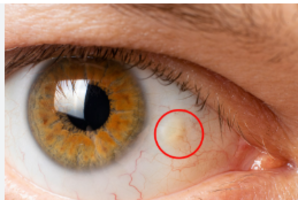Key Takeaways
- Endophthalmitis is a serious eye disorder requiring prompt treatment as it can lead to vision impairment.
- Endophthalmitis can be caused by microbes penetrating the eye during surgery or injury or when the organism spreads from another site to the eye.
- Diagnosis of endophthalmitis will involve a comprehensive examination of the eye, an ultrasound of the eye to rule out the presence of a retinal detachment, and additional tests aiming to identify the infectious organism responsible.
- Treatment will involve injecting antibiotics into the eye, surgical interventions where indicated, and sometimes, systemic antibiotics or corticosteroids.
- Prevention strategies for endophthalmitis include maintaining proper hygiene in the context of topical eye surgeries, the use of topical antibiotics during ocular surgical procedures, wearing protective eye wear, and treatment and control of systemic infections.
Endophthalmitis is a rare but serious eye condition that can result in vision loss or even blindness if left untreated. It occurs when the interior of the eye becomes inflamed, typically due to the introduction of infectious agents like bacteria or fungi. This condition demands immediate attention and treatment to preserve vision and prevent further complications. Let’s get into the intricacies of endophthalmitis, including its causes, diagnosis, and available treatment options.
Synopsis
Endophthalmitis is a severe inflammation of the internal structures of the eye, including the vitreous humour and the aqueous humour. This condition can be classified into two main types:
-
Exogenous Endophthalmitis: This occurs when infectious agents enter the eye from an external source, such as through surgery or trauma.
-
Endogenous Endophthalmitis: In this form, the infection originates from within the body, typically as a result of a bloodstream infection spreading to the eye.
Causes
-
Surgery or Trauma: Endophthalmitis can develop as a complication of eye surgery, particularly cataract surgery or intraocular lens implantation. Traumatic injuries to the eye, such as a foreign object penetration, can also introduce infectious agents into the eye.
-
Microbial Infections: Bacteria and fungi are the primary culprits behind endophthalmitis. Common bacterial species include Staphylococcus and Streptococcus, while Candida is a frequent fungal offender.
-
Endogenous Sources: Individuals with systemic infections like endocarditis or immunosuppressive conditions may be at risk for endogenous endophthalmitis, as the infection can spread to the eye via the bloodstream.
Diagnosis
Timely and accurate diagnosis is critical for effective treatment. Eye specialists, known as ophthalmologists, employ a variety of techniques to diagnose endophthalmitis, including:
-
Clinical Evaluation: The ophthalmologist will examine the eye for signs of inflammation, redness, pain, and vision changes.
-
Ultrasound: Ocular ultrasound can help visualise the internal structures of the eye and identify the presence of pus or debris.
-
Microbiological Testing: Samples of intraocular fluid may be collected and sent for laboratory analysis to identify the causative microorganism.
-
Blood Tests: In cases of endogenous endophthalmitis, blood tests may be conducted to detect systemic infections.
Treatment
Endophthalmitis is considered a medical emergency, and prompt treatment is crucial to prevent vision loss. Treatment options may vary depending on the severity of the condition and the underlying cause:
-
Intravitreal Antibiotics: The primary treatment involves injecting antibiotics directly into the eye to combat the infection. The choice of antibiotic depends on the identified pathogen.
-
Vitrectomy: In severe cases, a vitrectomy may be necessary. This surgical procedure involves the removal of the vitreous humour to clear the infection.
-
Systemic Antibiotics: In endogenous endophthalmitis, treating the underlying systemic infection with antibiotics is essential.
-
Corticosteroids: These may be prescribed to reduce inflammation and manage the body’s immune response.
-
Supportive Care: Rest, pain relief, and close monitoring by an ophthalmologist are essential components of the treatment plan.
Prevention and Outlook
While prompt treatment is vital, preventing endophthalmitis is equally important. Here are some measures that can help reduce the risk of developing this condition:
-
Proper Hygiene: For those undergoing eye surgery, ensuring that surgical instruments and the operating environment are sterile is crucial in preventing exogenous endophthalmitis.
-
Antibiotic Prophylaxis: Eye surgeons often administer antibiotics before and after surgery to minimise the risk of postoperative infections.
-
Eye Protection: Wearing appropriate eye protection during activities that pose a risk of eye trauma, such as sports or construction work, can prevent injuries that might lead to endophthalmitis.
-
Management of Systemic Infections: Timely diagnosis and treatment of systemic infections can reduce the risk of endogenous endophthalmitis. People with conditions like endocarditis or diabetes should closely manage their health.
-
Regular Eye Checkups: Routine eye examinations can help detect and address eye problems early, reducing the likelihood of complications that could lead to endophthalmitis.










